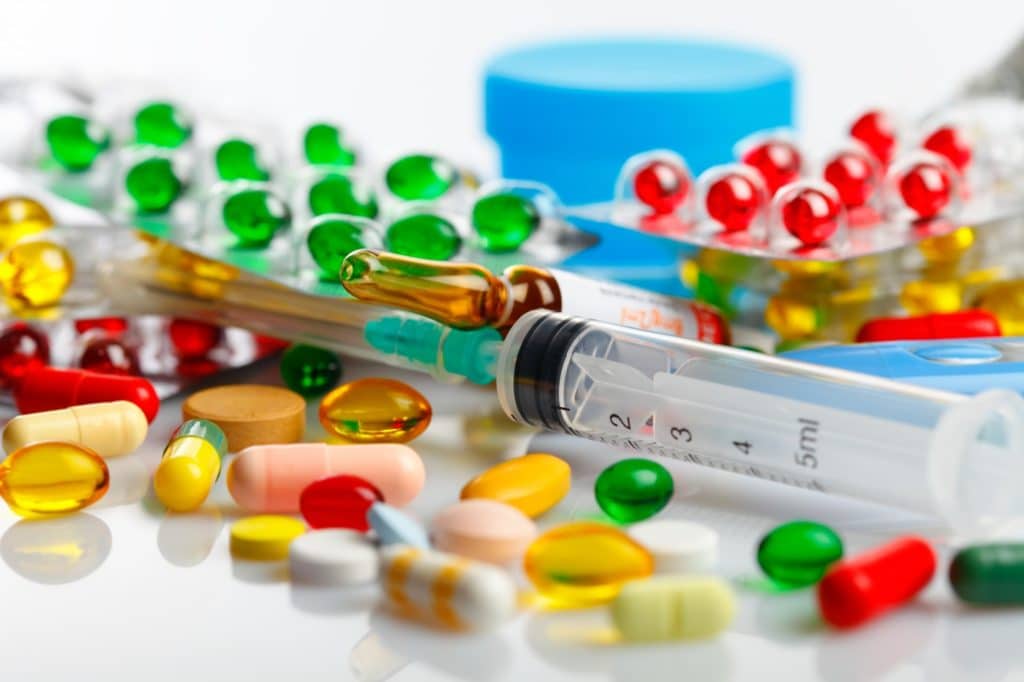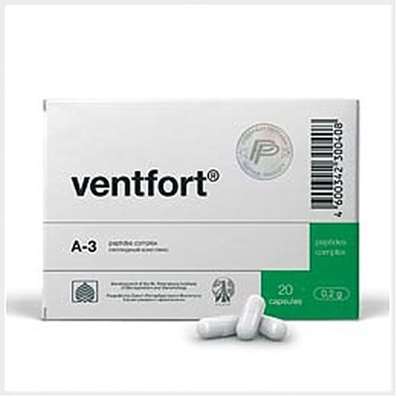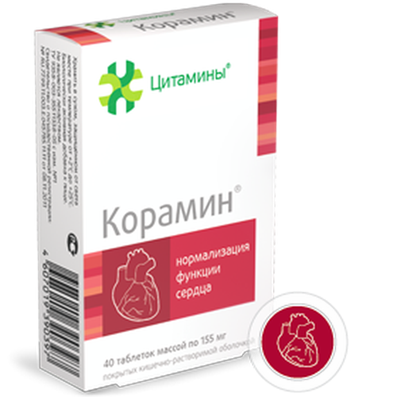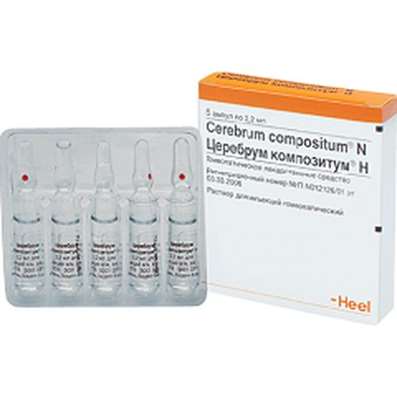Medicines for the protection of the liver
31 Aug 2018
Every day, every hour, every minute, the human body is exposed to the action of many factors that damage it, external and internal. But a complex and multilevel protection system is capable for the time being to make these impacts practically invisible and almost not dangerous for humans. Almost - because nothing in the body does not pass without a trace. Viral or bacterial attacks, inhaled air toxins, dyes and preservatives in food, overeating and alcoholic libations all affect the health, even if it does not affect well-being. Because all this increases the load on the liver, which cleanses blood from all sorts of decomposition products. And it is quite possible - will affect in the future. Because if the liver suffers, the whole body suffers.

The liver is the largest internal organ. Its weight is about 2% of the body weight in adults (an average of 1.2-1.5 kg) and about 5% in children. In the body, this most massive organ performs several important functions: purification of blood from toxic substances, secretion and secretion of bile, synthesis of various biologically active substances and maintenance of the energy balance of the body. Its damage entails a variety of various disorders and, as a result, diseases of other organs and systems. Metabolic disorders, various allergic reactions, dysfunctions of the digestive system, a decrease in antimicrobial protection, weakness, lethargy, chronic fatigue - all this may be a consequence of damage to the liver and its cells.
Mechanisms of liver damage
Various natural substances, synthetic chemical compounds used in the food industry, as well as most medicines, can cause chemical damage to the liver - it is the liver cells that neutralize both natural toxins and synthetic xenobiotics.
At present, specialists identify 5 main mechanisms of chemical damage to the liver:
- damage to the plasma membrane of liver cells - hepatocytes;
- disturbances in the function of mitochondria, which lead to a decrease in ATP in the cell and its subsequent death;
- violation of intracellular ion homeostasis - an increase in the concentration of sodium and calcium ions and a decrease in potassium ions; this further leads to damage to the cytoplasmic membrane and / or disruption of mitochondrial functions and, as a consequence, to the death of hepatocytes;
- activation of substances degradation enzymes (proteinase, nuclease, phospholipase, etc.), which leads - to damage to cellular and mitochondrial membranes, followed by cell death;
- the action of free radicals.
In addition to chemical damage to the liver, there are other mechanisms that cause the death of liver cells. Not the least role in these processes is the activity of the immune system, designed to normally protect the body from the penetration of foreign agents and destroy them. Sometimes, immune reactions directly or indirectly lead to liver damage. The functioning of killer lymphocytes, hyperproduction of cytokines, autoantibodies that occur with allergies, and some other immune responses in a number of cases can cause hepatocyte death, dysfunction and liver diseases. And, of course, among the causes that cause liver disruption, we can not fail to mention hepatitis viruses that directly affect liver cells.
Treatment of liver diseases
When it comes to the pathology of the liver, there are two main areas of treatment. This is primarily etiotropic therapy - the fight against the cause of the disease. In clinical practice, this suppression of a pathogenic agent in viral hepatitis (with the parenteral mechanism of infection). The second area of complex treatment is the impact on various links of pathogenesis with the help of pharmacological agents. Pathogenetic therapy may include the following groups of drugs:
- vitamins, amino acids, peptides and other agents that positively influence the processes of tissue metabolism;
- adsorbents, antidotes, which reduce the load on the liver due to its detoxification activity;
- drugs that help metabolize xenobiotic substances (inhibitors and inducers of microsomal systems);
- immunomodulators;
- antiviral and antimicrobial agents;
- anti-inflammatory drugs;
- cholagogue;
- antioxidants;
- hepatoprotectors.
Hepatoprotectors - a special group of drugs
Despite such an abundance of liver damaging factors, there is one surprising property in the liver that inspires optimism: the ability to regenerate with the restoration of lost functions. It is on the maintenance and stimulation of this ability that the action of a special group of drugs - hepatoprotectors is mainly directed. In addition, their task is to increase the resistance of the liver to the action of damaging factors, to stop and prevent further destruction of the liver by suppressing fibrogenesis (replacing the hepatic tissue with fibrous tissue).
The arsenal of modern hepatoprotectors is quite wide. They differ in origin (natural and synthetic), chemical structure, mechanism of action, etc. There is no unified classification system for such funds, however, it is a common practice to divide hepatoprotective agents into the following groups:
- preparations of vegetable origin;
- preparations of animal origin;
- preparations containing essential phospholipids (EFL);
- amino acids or their derivatives;
- vitamins-antioxidants and vitamin-like compounds;
- preparations of different groups.
Plant hepatoprotectors. The most in demand at the moment are herbal preparations. More than half of all hepatoprotectors sold today are herbal remedies.
Milk thistle, as well as preparations based on its bioflavonoids, have proven themselves in the protection of the liver. The main substance thistle spotty - silibinin (in complex with other isomers makes silymarin) - has a membrane-protective, antioxidant and metabolic effects. Thanks to its action, the resistance of the cell membrane increases, the concentration of intracellular calcium decreases and the calcium-dependent activation of phospholipases decreases. In addition, there is evidence that silybinin is able to block the transport systems of certain toxins (in particular the toxins of pale toadstool) and to bind the radicals. In addition, silibinin stimulates the synthesis of proteins and accelerates the regeneration of damaged hepatocytes, slows liver fibrosis in cirrhosis. However, patients with cholestasis should be careful - in some cases, silibinin increases cholestasis. It is not recommended to use milk thistle preparations with long courses.
Also popular are the preparations based on the extract of another hepatoprotective plant - artichoke. Artichoke increases the antitoxic function of the liver, lowers cholesterol in the blood with cholesterolemia, and has choleretic action.
Licorice root, as well as preparations based on glycyrrhizin (an aqueous extract of licorice root), has antioxidant properties, reduces the activity of liver enzymes and reduces the severity of liver fibrosis. However, because of the possibility of developing hypokalemia as a side effect of glycyrrhizin treatment, the administration of licorice root preparations as hepatoprotectors requires careful additional examination and constant monitoring of the doctor.
The hepatoprotective effect is also exerted by biologically active substances contained in the pumpkin seed oil. Preparations based on them have membrane stabilizing, anti-inflammatory, choleretic properties. In addition, pumpkin seeds slow down the development of connective tissue and accelerate the regeneration of liver cells.
Hepatoprotectors of animal origin. These preparations are hydrolysates of liver extract of cattle or isolated hepatocytes obtained as a result of freeze drying of animal liver cells. Such drugs have a reparative effect, but their appointment requires mandatory testing for individual sensitivity.
Preparations containing essential phospholipids. The second most prevalent group of drugs for the protection of the liver. It accounts for about 16% of all hepatoprotectors. Essential phospholipids restore cell membranes of liver cells and promote their regeneration. The molecules of the esterial phospholipids are embedded in the phospholipid structure of the damaged hepatocytes, thereby restoring the barrier function of the lipid layer. In addition, essential phospholipids inhibit lipid peroxidation. Although in some cases they may themselves be involved in this process.
Amino acids and their derivatives. Ademethionine (adenosylmethionine) plays an important role in the synthesis of phospholipids and other substances necessary for the normal functioning of liver cells and regeneration processes. Its use promotes the removal of free radicals and other harmful metabolites from hepatocytes. Effective as a means of accompanying potentially hepatotoxic drugs. In addition, ademetionine has an antifibrotic effect. And, finally, this is the only drug that can not only protect the liver, but also have an antidepressant effect (on the 5th-7th day of admission). This property of ademetionine is successfully used in the treatment of patients with alcoholic liver damage, and the drug simultaneously acts as an antidepressant and hepatoprotector. Ademetionine is also recommended for use in pregnant patients with cholestasis as a means of resolving steroid cholestasis. The undoubted advantage of this drug is the possibility of its use in almost all hepatic pathologies without the risk of side effects.
Preparations based on amino acids ornithine and aspartate are involved in regulating the metabolism in hepatic cells and are used as a hepatoprotector for hepatitis, cirrhosis and hepatic encephalopathy.
Vitamins and vitamin-like compounds. To preserve the health of the liver, vitamins E and C are required, which have antioxidant activity, lipoic (alpha-lipoic) acid has proved to be particularly useful as a hepatoprotector. It acts as an antioxidant, has immunomodulating activity, helps slow down the development of liver fibrosis and even its regression.
Preparations of different groups. Ursodeoxycholic acid contributes to the removal of toxic substances from the liver, prevents the toxic effect of hydrophobic bile acids on the membranes of liver cells, inhibits the production of immunoglobulins that contribute to the destruction of the liver, has an antioxidant effect.
Today, in the pharmaceutical market of the country, more than 1,000 names of hepatoprotective drugs are presented, and their number continues to grow. And this is not surprising, because according to WHO data, for the last several decades in Russia, as well as in the whole world, there is a clear tendency to an increase in the number of liver diseases. And this means that drugs that support the liver, helping it cope with its functions, will be increasingly in demand. After all, the fairness of the expression: "The disease is easier to prevent than treat" is particularly evident when one of the main defenders of our body itself needs protection.

 Cart
Cart





